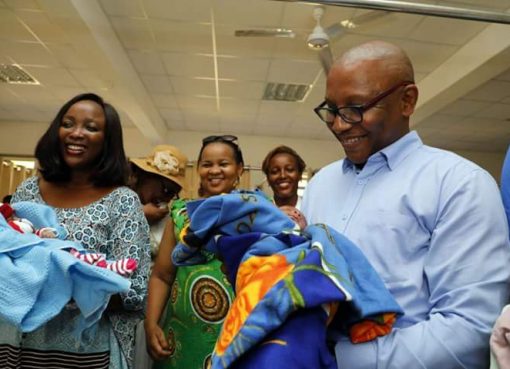The World Health Organization (WHO) has launched its first ever comprehensive framework to reduce cases of anaemia.
The framework was launched in the just concluded International Maternal Newborn Health Conference in South Africa where more than 1,000 stakeholders from around the world came together to accelerate solutions to improve maternal and newborn survival.
WHO is calling on countries to accelerate action to halve anaemia prevalence in women of reproductive age by 2025.
Kiambu County has put in place the County Nutrition Action Plan (CNAP) 2020–2025 with an ambitious target for scaling up nutrition and the ability to avert 21,006 cases of anaemia in pregnant women by 2025.
The reduction in the prevalence of iron deficiency anaemia in pregnant women will be approximately 50 per cent.
But according to the WHO, progress on reducing anaemia has been slow, and the world is not on track to reach the global target.
Anaemia is a serious global public health problem, affecting 571 million women and 269 million young children worldwide.
In a press statement, Francesco Branca, the Director of WHO’s Department of Nutrition and Food Safety, said that most work on addressing anaemia has been focused on the prevention and treatment of iron deficiency.
However, he added that anaemia is a complex condition with multiple causes, including other nutritional deficiencies, infections, inflammation, gynaecological and obstetric conditions, and inherited red blood cell disorders, and all this has to be addressed to effectively prevent and treat anaemia.
The new framework sets forth ways to address the direct causes, risk factors, and broad social inequities that are fundamental drivers of anaemia.
It describes the necessarily comprehensive approach that brings together multiple sectors and actors and lays out key action areas to improve the coverage and uptake of interventions.
Acknowledging that health remains the predominant sector for delivering many of the recommended interventions, the framework also proposes actions that other societal stakeholders can take.
These include governments, civil society, academia, researchers, funding agencies, international organizations, and the media. Each has a particular role to perform in reducing anaemia and keeping people healthy.
In 2019, anaemia affected 40 per cent of children between 6 months and 5 years of age, 37 percent of pregnant women, and 30 percent of women 15–49 years of age. It is most prevalent in low- and middle-income countries.
The burden of maternal anaemia in Kenya from 2016 to 2019 overall shows that a total of 886,168 maternal anaemia cases were reported in 290 sub-county facilities.
Compared to 2016 estimates, the number of cases increased by 10.4 per cent to 171,682 cases in 2017, 69.3 per cent to 263,305 cases in 2018, and 90.1 per cent to 295,642 cases in 2019.
Anaemia is a strong indicator of overall health and increases the risk of infections and death, impairs cognitive performance, and causes extreme fatigue, poor pregnancy outcomes, loss of earnings, and poor growth and development.
By Wangari Ndirangu





